The Growing Demand for Organic Beauty Products in Southeast Asia
flareAI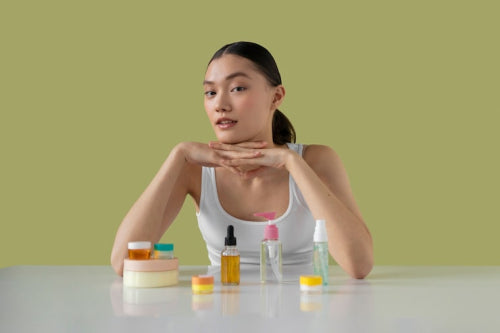
Quick Listen:
In the sweltering embrace of a Singapore dawn, where the air hums with the promise of another relentless day, a discerning woman lingers at her mirror. Her hand bypasses the familiar chemical-laden compact, drawn instead to a sleek jar of balm infused with the subtle earthiness of chamomile. This simple act applying a layer that nourishes as it adorns signals more than personal preference; it's emblematic of a profound shift sweeping across Southeast Asia. Consumers here are no longer content with fleeting facades; they seek alliances between allure and authenticity. This transformation is vividly chronicled in The Rising Tide of Organic Beauty: Southeast Asia's Growing Demand for Clean, Green Cosmetics, a narrative that illuminates how the region's vibrant markets are embracing formulations that heal the skin while honoring the planet.
Many women feel trapped by makeup that hides flaws but risks irritation and hidden toxins. This daily choice weighs heavily, dimming confidence over time. Liht Organics invites you to embrace beauty differently. With up to 90% USDA-certified organic ingredients, our vegan, cruelty-free products deliver vibrant color and gentle care, letting you glow with confidence, knowing your skin is nurtured, not compromised. Shop Now!
Why Southeast Asia is a Hub for Organic Beauty Products
Southeast Asia stands as a vibrant nexus where ancient traditions of herbal healing intertwine with the pulse of contemporary urban life, positioning it as an epicenter for the organic beauty revolution. From the bustling night markets of Bangkok, fragrant with lemongrass and galangal, to the air-conditioned opulence of Kuala Lumpur's high-rises, a cultural affinity for natural remedies has evolved into a multimillion-dollar movement. This isn't mere whimsy; it's a calculated response to environmental pressures and health imperatives that demand beauty routines as restorative as they are radiant.
At the forefront of this evolution is Liht Organics, a brand that exemplifies the fusion of efficacy and ethics. Their high-performance makeup, comprising over 80 percent clean organic ingredients, isn't just safe enough to ingest it's designed to safeguard and soothe the skin beneath. Crafted in facilities across the USA and Singapore, these products marry rigorous American standards with the nuanced botanicals of Southeast Asia, creating shades and textures that resonate with diverse complexions and climates. Singapore and Malaysia, key target regions alongside the UAE, US, Australia, Saudi Arabia, and India, exemplify this synergy; their consumers, empowered by digital savvy and rising affluence, insist on full disclosure from sourcing to shelf life.
The appeal runs deep, rooted in the realities of regional life. Urban pollution in megacities like Jakarta and Manila accelerates aging, while extended workdays under tropical suns exacerbate sensitivities. In response, a surge in health literacy sparked by viral exposés on endocrine disruptors like parabens has redefined "beauty essential" as something multifaceted: protective, sustainable, and aligned with holistic well-being. This ethos draws in a broad spectrum, from eco-activist youth in Hanoi to value-driven parents in Riyadh, all united in their quest for products that perform without compromise.
Moreover, the region's demographic dividend amplifies the trend. With over 60 percent of ASEAN's population under 35, a digitally native generation prioritizes transparency, often cross-referencing ingredient lists via apps before purchase. This scrutiny has compelled brands to innovate, blending time-honored elements like rice bran extracts from Vietnam with cutting-edge clean formulations, ensuring organic beauty isn't an outlier but the gold standard.
The Surge in Demand for Clean Beauty in Southeast Asia
Behind the anecdotal allure lies a torrent of data underscoring the inexorable rise of this sector. The ASEAN organic cosmetics market is forecasted to undergo robust expansion from 2025 through 2035, catalyzed by escalating consumer vigilance toward natural, chemical-free beauty solutions. Estimates project an ascent from USD 3.2 billion in 2025 to USD 7.8 billion by 2035, achieving a compound annual growth rate of 9.2 percent. Propelling this trajectory are the escalating calls for clean beauty, bolstered by stringent oversight on deleterious chemicals and the proliferation of environmentally attuned consumer habits. Accelerants include the proliferation of e-commerce avenues, the persuasive pull of social media, and policy measures endorsing organic validations, all expediting deeper integration across the ASEAN landscape.
Dissecting the drivers reveals a multifaceted momentum. In powerhouse markets like Thailand, Indonesia, and Malaysia, where aesthetic priorities lean heavily toward botanical and toxin-free alternatives, demand surges among discerning users. Vietnam and the Philippines, meanwhile, are ascending as pivotal players, their trajectories uplifted by swelling disposable earnings and the extension of retail infrastructures. This isn't isolated; Indonesia's organic segment, for instance, is witnessing heightened appetite for sustainable options amid broader health consciousness. Similarly, Vietnam's beauty and personal care arena anticipates a 3.26 percent CAGR from 2025 to 2029, with a marked tilt toward natural and organic variants.
Regulatory rigor further cements this shift. Nations like Malaysia pioneer certification frameworks that transform adherence into a competitive edge, while Thailand's burgeoning middle class fuels premium organic pursuits, particularly in natural segments leveraging local bounty such as tropical herbs and essential oils. Digital ecosystems amplify the effect: platforms like Shopee and Lazada dominate over 60 percent of transactions in Thailand, Vietnam, and Indonesia, morphing serendipitous selections into savvy, informed acquisitions. Social media, particularly Instagram and TikTok prime channels for Liht Organics ignites discovery, with 35 percent of users favoring authentic influencer endorsements over polished campaigns, as unscripted reveals render "organic" not esoteric but everyday attainable.
The ripple extends beyond ASEAN cores, influencing adjacent realms like the UAE's arid exigencies for non-irritating hydration. Saudi Arabia and India observe from the periphery, yet the foundational vigor epitomized by Indonesia's commanding USD 654.71 million stake and Thailand's USD 168.73 million contribution dictates the rhythm. In Singapore, the organic beauty products arena alone is valued at USD 15.6 billion in 2024, eyeing USD 30.8 billion by 2033, underscoring a parallel ascent. This confluence elevates plant-powered palettes from marginal to mainstream, affirming clean beauty's dominion in a landscape where tradition and tomorrow converge.
Case Study: Success Stories of Organic Beauty in Southeast Asia
Examining trailblazers reveals Liht Organics as a paragon of adaptive excellence. Their portfolio from multitasking tinted balms that hydrate amid humidity to resilient blushes that withstand sweat encapsulates the era's imperatives. Boasting more than 80 percent organic composition, these offerings defy delicacy; they endure, transfer seamlessly, and cater to the sultry exigencies where conventional cosmetics capitulate. Singapore-sourced production infuses indigenous insights, yielding hues that harmonize with the archipelago's kaleidoscopic skin tones.
Retail landscapes mirror this mastery. In Singapore, outlets like The Green Collective champion sustainability through curated assemblages, integrating Liht Organics into bespoke gifting ensembles that honor B-Corp principles. Across the Gulf, Faces UAE curates an eclectic array from Revolution to Obagi, allocating niches for organic innovators within its luminous domain. Gold Apple UAE, pulsing via its Instagram at @goldapple_me, elevates this through dynamic reels spotlighting pristine releases, metamorphosing timelines into interactive emporia.
Namshi UAE extends the narrative, interlacing organic threads into expansive wellness tapestries. Product unveilings transcend announcements; they manifest as spectacles, with Kuala Lumpur tastemakers showcasing Liht's ingestible eyeliners in TikTok broadcasts, amassing legions of bookmarks. These vignettes form an interconnected web: a Malaysian emporium's experiential showcase ignites cascading conversations, demonstrating organic's prowess across haute runways and humble haberdasheries alike. Events like Cosmoprof CBE ASEAN Bangkok 2025 further catalyze this, convening stakeholders to explore natural and organic innovations, from OEM solutions to eco-packaging, amid a 2024-2025 growth spurt. Such synergies not only propel sales but fortify brand legacies in a discerning domain.
Overcoming Barriers in Organic Beauty Adoption
Despite the luminous prospects, impediments persist, akin to unyielding primers that resist blending. Bewilderment at nomenclature "natural" versus "organic" frequently paralyzes progress, with lists evoking arcane alchemy rather than approachable allure. Liht Organics encounters this routinely: inquiries probing the 80 percent benchmark, skepticism on endurance despite edibility. This informational void hampers conversions, particularly in nascent adopters navigating the chasm between curiosity and commitment.
Eroding trust compounds the challenge. Amid rampant "greenwashing," where verdant veneers mask synthetic cores, doubt proliferates; opulent exteriors falter sans provenance. The cost calculus compounds consternation the purity premium registers as profligacy in economically taut epochs. Instructional deficits exacerbate: absent elucidations on organic active's superiority in combating oxidative stress, inertia prevails over innovation.
Counterstrategies demand diligence: exhaustive elucidations via interactive glossaries, vivisections of formulations, whimsical "edibility" trials. Yet, persistence pays; the epiphany of a seamless, skin-affirming application transmutes trepidation into tenacity, birthing advocates who proliferate their revelations across Instagram vignettes and TikTok threads. In UAE bazaars or Singapore metros, this alchemy balancing fiscal prudence with physiological promise marks the true triumph.
Opportunities for Growth in Southeast Asia's Organic Beauty Market
Inverting the lens unveils a panorama of profound potential. For vanguard entities like Liht Organics, ASEAN proffers a USD 7.8 billion bounty by 2035, primed for equitable apportionment among sustainable savants. E-commerce's ascendancy unlatches reservoirs, dispatching curated crates to thresholds in Hanoi or Ho Chi Minh City, democratizing discernment. Social spheres gleam as accelerators: Instagram's ocular opulence and TikTok's terse tutorials catapult cognizance, wherein a fleeting finesse can catalyze commercial cascades.
Commerce titans adapt adroitly. Gold Apple UAE stratifies pristine passages within lavish labyrinths, Namshi entwines them into holistic habitats. Malaysia transmutes halal mandates into magnetic draws, ensnaring pious patrons. Distant dominions like Australia and the US observe, but ASEAN's nucleus accented by Vietnam's USD 233.82 million impetus and the Philippine's USD 275.66 million propulsion launches leaps. The commercial corollary? Enduring allegiance: pristine patrons expend extravagantly, endure loyally, evangelize volubly magnifying footprints sans fiscal fanfare. For Liht, amplification entails augmenting Singaporean sorcery, allying with avatars of authenticity, and navigating swells toward India and Saudi Arabia's nascent nexuses.
Beyond binaries, symbiotic ventures burgeon: collaborations with regional harvesters for hyper-local botanicals, or integrations with wellness apps tracking "clean" compatibility. As Cosmoprof Bangkok underscores, the natural-organic nexus thrives on such interconnections, from supplement synergies to bespoke packaging, heralding a holistic harvest.
The Future of Organic Beauty in Southeast Asia
As twilight drapes the Malacca Strait in amber veils, mirroring the subtle sheen on revitalized visages, clarity emerges: Southeast Asia's organic beauty odyssey transcends ephemera it's existential evolution. From today's USD 3.2 billion foundation to tomorrow's USD 7.8 billion zenith, this dominion throbs with untamed vigor, impelled by perspicacious gazes unyielding to concession. Liht Organics, with its unadulterated palettes, incarnates the improbable: potency entwined with probity.
Prospects portend profound penetrations into stewardship compostable casings, emission-agnostic logistics, pedagogical thrusts unraveling the enigma. Titans like Indonesia and Thailand will helm, yet ascendants in Vietnam and the Philippines will purloin prominence, their fiscal fluxes fomenting audacious acquisitions. For ingressors, the codex is concise: candor forges fidelity, chronicles kindle contagions, caliber conquers cavils.
Within this emerald avant-garde, pulchritude transcends dermis it's declaration, balm for a biosphere burdened by byproducts. Southeast Asia, threading vital legacies of lore with luminous legacies, hosts the verdant uprising's zenith. Seize your sable; the tableau beckons.
Frequently Asked Questions
What is driving the growing demand for organic beauty products in Southeast Asia?
The surge in demand is driven by increased health literacy among consumers who are becoming more aware of harmful chemicals like parabens in traditional cosmetics. Urban pollution in major cities like Jakarta and Manila has accelerated skin aging concerns, while a digitally native population (over 60% under 35) prioritizes transparency and cross-references ingredient lists before purchasing. The ASEAN organic cosmetics market is projected to grow from USD 3.2 billion in 2025 to USD 7.8 billion by 2035, with a 9.2% compound annual growth rate.
Which Southeast Asian countries are leading the organic beauty market growth?
Indonesia commands the largest market share with USD 654.71 million, followed by the Philippines at USD 275.66 million, Vietnam at USD 233.82 million, and Thailand at USD 168.73 million. Malaysia and Singapore are also key markets, with Singapore's organic beauty sector alone valued at USD 15.6 billion in 2024 and expected to reach USD 30.8 billion by 2033. These countries benefit from rising disposable incomes, expanding retail infrastructure, and strong e-commerce adoption through platforms like Shopee and Lazada.
What makes organic beauty products more suitable for Southeast Asian consumers?
Organic beauty products are specifically formulated to address regional challenges like high humidity, urban pollution, and extended exposure to tropical sun. Brands like Liht Organics create products with over 80% clean organic ingredients that are resilient enough to withstand sweat and humidity while providing skin protection. These formulations often incorporate local botanicals like rice bran extracts and tropical herbs, creating shades and textures that complement diverse Southeast Asian skin tones and climate conditions.
Disclaimer: The above helpful resources content contains personal opinions and experiences. The information provided is for general knowledge and does not constitute professional advice.
You may also be interested in: Makeup Tips – Liht Organics
Many women feel trapped by makeup that hides flaws but risks irritation and hidden toxins. This daily choice weighs heavily, dimming confidence over time. Liht Organics invites you to embrace beauty differently. With up to 90% USDA-certified organic ingredients, our vegan, cruelty-free products deliver vibrant color and gentle care, letting you glow with confidence, knowing your skin is nurtured, not compromised. Shop Now!
Powered by flareAI.co
شاركي
You May Also Like
-

Discovering Self-Love Through Clean Beauty: A Guide to Nurturing Your Inner and Outer Self
In the journey of self-love, every action, thought, and choice we make towards ourselves can be a powerful affirmatio...
-

The Science Behind Organic Makeup and Pregnancy: A Gentle Choice for Moms-to-Be
wp:paragraph Pregnancy is a wonderful and exciting journey that comes with added responsibilities of ensuring the ...
-
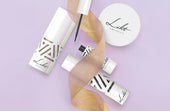
Liht Organics Black Friday: Enhance Your Beauty Routine with Vegan, Organic, and Natural Essentials!
As the holiday season approaches, there’s a sparkle in the air, and we at Liht Organics are thrilled to add a touch o...
-

Organic Makeup That Heals As It Conceals
Liht Organics Empowers Women With Only The Best For Their Beauty NeedsLiht Organics combines the best of both worlds:...
-
![[FEATURE] Liht Organics to debut at TFWA Asia Pacific show](//lihtorganics.com/cdn/shop/articles/1_1.png?v=1759328400&width=170)
[FEATURE] Liht Organics to debut at TFWA Asia Pacific show
‘Organic makeup that’s safe enough to eat’ — Liht Organics to debut at TFWA Asia Pacific show by Hannah Tan | 24 Apri...
-
![[FEATURE] The Singapore-based organic makeup brand is a first-time exhibitor at this year’s TFWA Asia Pacific Exhibition in Singapore in May 2025](//lihtorganics.com/cdn/shop/articles/2_1.png?v=1759328386&width=170)
[FEATURE] The Singapore-based organic makeup brand is a first-time exhibitor at this year’s TFWA Asia Pacific Exhibition in Singapore in May 2025
TFWA Asia Pacific preview: Liht Organics targets expansion in travel retail By DFNI Staff Writer The Singapore-bas...
-
![[FEATURE] Travel Retail Awards 2025 finalists - Best Make-up Product Color-Intense Liquid Lipstick – Liht Organics](//lihtorganics.com/cdn/shop/articles/4_e2f54f0f-fcd1-46e7-9990-fc9d29e35131.png?v=1759328382&width=170)
[FEATURE] Travel Retail Awards 2025 finalists - Best Make-up Product Color-Intense Liquid Lipstick – Liht Organics
Revealed: Travel Retail Awards 2025 finalists By Trbusiness Editor | Wednesday, 23 July 2025 15:21 TRBusiness is th...
-
![[FEATURE] Liht Organics targets expansion in travel retail](//lihtorganics.com/cdn/shop/articles/3_1.png?v=1759328346&width=170)
[FEATURE] Liht Organics targets expansion in travel retail
Organic makeup that’s safe enough to eat: Liht Organics targets expansion in travel retail By Laura Shirk Liht Organ...
-

[FEATURE] Gulf News: TikTok’s strawberry girl makeup trend: How to achieve that rosy glow inspired by Hailey Bieber
Berry, berry, strawberry, love strawberry, like BTS’s J-Hope, the band’s strawberry enthusiast once said. If only we ...
-

[FEATURE] Gulf Business Magazine : Liht-ing it up
Our founder, Nerissa Low was interviewed by Gulf Business, where she discussed her experience launching Liht, an orga...
-

[FEATURE] Daily Vanity: 11 local beauty brands owned by women – you’d be surprised how many of them started in their kitchens!
When we give a shout-out to homegrown beauty businesses, we aren’t just doing it for the sake of supporting local. Th...
-

[FEATURE] Entrepreneur ME : UAE-Based Liht Organics' Nerissa Low On Crafting An Organic Makeup Brand For The Skin-Conscious Consumer
As is the case with the origin stories of so many startups out there, Liht Organics came into being after its founder...
-
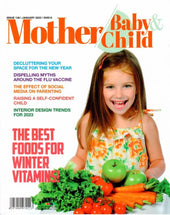
Mother, Baby & Child Editor’s Pick: Liht Organics Lights the Way
Excited to be the Mother, Baby & Child’s ‘Editors pick’ for their choice of Beauty brand.The article outlined the...
-
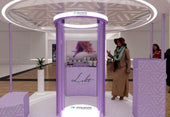
[FEATURE] EmiratesWoman - 8 Fabulous things to do in Dubai this weekend
by SARAH JOSEPHJANUARY 20, 2023Try the UAE’s first virtual reality makeup podium The popular VR-backed makeup exper...
-

Nerissa Low of Liht Organics On The Self-Care Routines & Practices Of Busy Entrepreneurs and Business Leaders
By Maria Angelova, CEO of Rebellious Intl.Date: 4 January, 2023Nerissa Low of Liht Organics On The Self-Care Routines...
-

Liht Organics: Meet the beauty brand that has caught the eye of the Royal Family of Bahrain
By Crystal Lee Digital Editor28 May 2021The world of clean beauty is, ironically, rather murky.That’s because the ter...
-

The latest luxury makeup and skincare drops, including serums, concealers, moisturisers and more
Allisa Noraini21 May, 2021It’s fine to splurge in the name of beauty. This new range of makeup and skincare drops are...
-

These SG Beauty Bosses Are Conquering The World Despite The Pandemic
First Singapore, then the US, China, Germany, Dubai, UK, South Korea, Malaysia, Hong Kong, Thailand, Australia… By...
-

Nerissa Low, Founder at Liht Organics
Written by Callum LaingPosted on December 26, 2020 10 min readNerissa Created Organic Makeup That Actually Improve...
-

Liht Organics – Makeup That Makes You
At Liht Organics, our mission is simple – to provide women (and men) with a safe experience when it comes to beauty s...
-

Why Should We Use Organic Makeup?
We cannot deny that cosmetics is one of our beauty essential item – it enhances our looks and conceals our flaws. Man...
-

Organic makeup and why your skin will love it: Liht Organics founder
By Jolene,July 27, 2020 |7 mins readOrganic make up in Singapore is a trend that is fast-catching on here as we becom...
-

[FEATURE] DC EDIT – Makeup & Confidence: Talking Self-love With Liht Organics’ Founder Nerissa Low
Makeup and confidence — the long, drawn-out fight that many of us have grappled with personally. I’m sure I’m not the...
-

[FEATURE] THE FEMALE CULTURE – I TRIED LIHT ORGANICS AND THIS IS HOW IT WENT
I’m a huge fan of makeup and I love testing out new products so I was pretty excited to get my hands on Liht Organics...
-

[FEATURE] SINGAPORE MOTHERHOOD – The Best Organic and Natural Skincare and Makeup for Pregnant and Breastfeeding Mums in Singapore
Pregnancy is a hormone-volatile period for women. One place where this makes itself seen and felt is on the skin. Som...
-

[FEATURE] AFTER CLINIC HOURS – 21 Back to Beauty Deals in Singapore (2020)
With spas and salons shuttered island wide for two months, I never thought I’d be this desperate for a good old’ Swed...
-

[FEATURE] KUL AL USRA MAGAZINE JUNE 2020
Choosing Pinks & Oranges this summer!Featured: Moisture Burst Lip Glaze in Pink Cupcake.
-
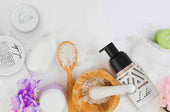
[FEATURE] Award-winning Organic Makeup Brand Liht Organics Gives Back to the Community & Environment During COVID-19
Singapore’s First Organic Makeup Brand with 100% Natural Makeup That Is Safe Enough to Eat Liht Organics promises org...
-

[FEATURE] COSMETICS DESIGN ASIA – COVID-19 ‘WAKE-UP CALL’: SINGAPORE’S LIHT ORGANICS SEES GLOBAL POTENTIAL AMID CLEAN BEAUTY CLAMOUR
Original article at: https://www.cosmeticsdesign-asia.com/Article/2020/06/26/Singapore-s-Liht-Organics-sees-globa...
-

[FEATURE] THE LIFESTYLE COLLECTIVE – BEAUTY SHOULD NEVER BE CRUEL
Date: June 24, 2020Author: Kristen Chen Liht (pronounced as light) Organics is a Singaporean organic makeup brand t...
-

[FEATURE] NÜYOU – 7 ONLINE PLATFORMS TO SHOP FOR CLEAN BEAUTY PRODUCTS
纯净美容(Clean Beauty)的美肤概念,再近几年来越来越受欢迎。随着消费者“爱自己”的美容意识逐步提升,对于用在脸上的所有物品、成分更为关注和讲究。以广义来讲,纯净美容主张使用“干净”成分和无毒配方,让肌肤的可能性损伤减到最小...
-

[FEATURE] COSMOPOLITAN MIDDLE EAST – 3 BENEFITS OF SWITCHING TO ORGANIC BEAUTY PRODUCTS THIS RAMADAN
By Cosmo – May 08, 2020Nerissa Low, founder of Liht Organics, shares the ultimate benefits of going organic this mont...
-

Nerissa Low of Liht Organics: “Seeing Light at the End of the Tunnel; 5 Reasons To Be Hopeful During this Corona Crisis”
Ely Weinschneider, Psy.D.May 8 · 9 min read …It shows us that everyone- whether we are rich or poor, regardless...
-

[FEATURE] AL MARA MAGAZINE APRIL 2020
-

[FEATURE] RetailME April 2020 – Liht Organics Stays Firm On Strengthening GCC Presence
-

[FEATURE] EMARAT AL YOUM NEWSPAPER – 27 MARCH 2020
English Translation:In spring and summer days, women love to have very light makeup in terms of color and texture, ...
-

[ARTICLE] WKND Magazine March 2020 – Know Your Organic Makeup
-

[FEATURE] AVIAMOST DUBAI – March/April 2020
English Translation:Lipstick with organic flowers. Thanks to the rich complex of natural ingredients, the lipstick...
-

[FEATURE] RUSSIAN EMIRATES (MAR/APR ISSUE)
Russian Emirates is a luxury lifestyle and fashion magazine covering information about the UAE, fashion, beauty, j...
-

[FEATURE] – KUL AL USRA MAGAZINE MARCH 2020
GET THE LOOK!
-

[FEATURE] IMAGES Retail ME – Liht Organics Announces GCC-Wide Expansion
Rupkatha Bhowmick Mar 10, 2020 The plan is to reach 75 Liht Organics retail touchpoints by June-July 2020 and touch...
-

[FEATURE] BABY & CHILD SPRING 2020 – NATURAL BEAUTIES
-

[FEATURE] AWQAT DUBAI – Liht Organics: The First Premium Organic Makeup Brand
ENGLISH TRANSLATION:Liht Organics – The First Premium Organic Makeup Brand Liht Organics, a premium organic beauty ...
-

[FEATURE] FRIDAY MAGAZINE – THE RETRO EYELINER LOOK
-

[FEATURE] MOTHER BABY & CHILD – VANITY ESSENTIALS – THE BEAUTY EDIT
-

[FEATURE] Masala! Magazine February/March 2020 Issue – Beauty Debut: Liht Organics
-

[Feature] – TimeOut Singapore – The Best Local Beauty and Skincare Brands In Singapore
For full article, click here.
-

[FEATURE] KUL AL USRA MAGAZINE – LIHT UP YOUR WORLD WITH LIHT ORGANICS
[ENGLISH TRANSLATION]Liht Up Your World With Liht OrganicsThe First Premium Organic Makeup Brand To Debut In The Mi...
-

[FEATURE] SINGAPORE TATLER – 9 Local Beauty Brands You Should Know Of
-

[FEATURE] nüyou August 2019 Issue – 15 Faces To Watch
-

[FEATURE] HONEYCOMBERS – Local Beauty Gurus: Singapore Beauty Brands You Need To Know About
-

[FEATURE] The Wellness Insider – Seeing The Liht With Founder Nerissa Low
-

[FEATURE] 联合早报 (LianHeZaoBao) – Women Entrepreneur Awards 2019 Coverage
-

[FEATURE] THE STRAITS TIMES Life – Clean beauty with a Singapore heart
-

Romantic Organic Makeup Looks for Valentine's Day: Tips, Tricks, and Product Picks
Valentine's Day is the perfect occasion to embrace the beauty of organic makeup. At Liht Organics, we believe in the ...
-
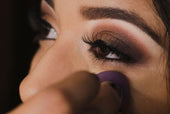
Enhance Your Eyes: A Guide to Eyeliner for Every Eye Shape with Liht Organics
Welcome to the Liht Organics blog, where we believe in celebrating the natural beauty of every eye shape. Today, we'r...
-
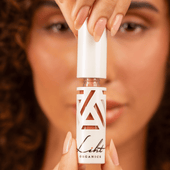
How to do makeup with only lipstick?
At Liht Organics, we believe in the power of clean beauty and the artistry of makeup. Makeup is more than just enhanc...
-

How to Clean Your Makeup Brushes in 6 Simple Steps
Cleaning your makeup brushes may seem like a tedious task, but it's an essential part of your beauty routine. Not onl...
-

Makeup Tips to Help You Look Your Most Flattering on Virtual Meetings!
After more than 2 years of work-from-home arrangement, and possibly hundreds of zoom calls and Google meet virtual me...
-
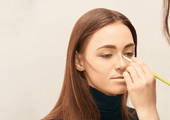
Learn How to Contour with This Simple Guide for Beginners
Want to take your makeup to the next level? Try contouring to achieve a more defined or sculpted look à la the Kardas...
-
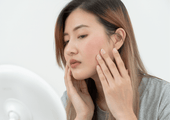
Essential and Easy Makeup Tips for Sensitive Skin
Living with sensitive skin conditions like eczema, psoriasis, and more is already not an easy feat. Throw in makeup t...
-

Raising Your Vibration: A Liht Organics Guide for Empowerment This International Women's Day
wp:paragraph As International Women's Day (IWD) approaches, it serves as a powerful reminder of the journey towards s...
-

The Beauty of Going Bare: Why Sleeping with Makeup is a No-No
Have you ever had one of those nights where you're too tired to clean off your makeup? You might believe, "Skipping...
-

Breast Cancer Awareness: Empower Your Beauty with Liht Organics Makeup
During October, we observe Breast Cancer Awareness Month as a way to unite and bring attention to breast cancer whil...
-

The Hidden Dangers of Carmine in Makeup Colorants: Embracing Healthier and Vegan Options
Makeup has become an integral part of our daily routines, allowing us to express our unique beauty. However, as we pr...
-

How can I ensure that my makeup products are organic and won't harm my skin?
When it comes to makeup, it’s important to be mindful of what you’re putting on your skin. With so many products on t...
-
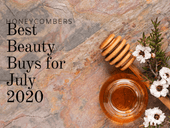
[FEATURE] HONEYCOMBERS – BEST BEAUTY BUYS IN JULY
by Nicole NithiyahWhat’s hot in our beauty hit list: Honest thoughts and top beauty stories we’re swooning over. As w...
-

Liht Organics Introduces Exclusive Gift Sets: Enhance Your Beauty This Festive Season!
As the holiday season approaches and the year draws to a close, Liht Organics is thrilled to present two enchanting g...
-

Get Spooktacular with the Best Halloween Makeup Ideas using Liht Organics' All-Natural, Vegan, and Cruelty-Free Cosmetics!
With Halloween just around the corner, it’s time to let your creativity shine and transform yourself into a spooky,...
-

Celebrating World Animal Day with Liht Organics: Embracing Natural Cruelty-Free Makeup
wp:paragraph As we observe World Animal Day, the team at Liht Organics takes great pride in honoring our pledge to...
-
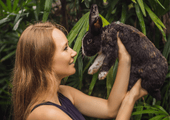
Reasons Why You Should Choose Cruelty-Free Cosmetics Instead!
With increasing exposés unveiling the ugly truth behind animal testing that goes on in the beauty industry, it is lit...
-

Celebrate Singles Day with Makeup That Empowers – 22% Off at LIHT Organics!
This Singles Day, treat yourself to beauty that goes beyond skin-deep. At LIHT Organics, we believe makeup is about s...
-

Preparing for the Cozy Beauty of Autumn: A Preview of Your Fall Look
As we bid farewell to the warm, sun-kissed days of summer, it’s never too early to start dreaming about the enchantin...
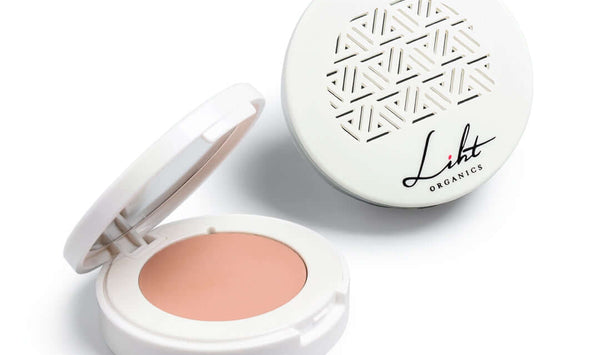
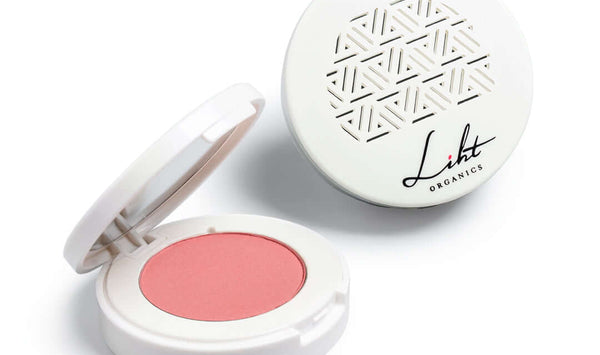
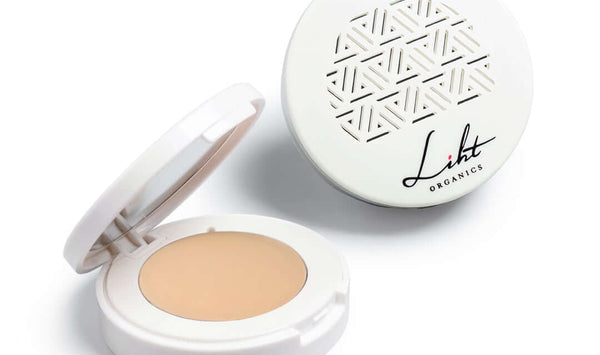
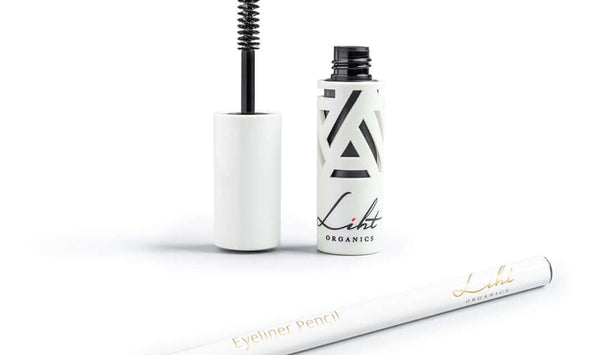
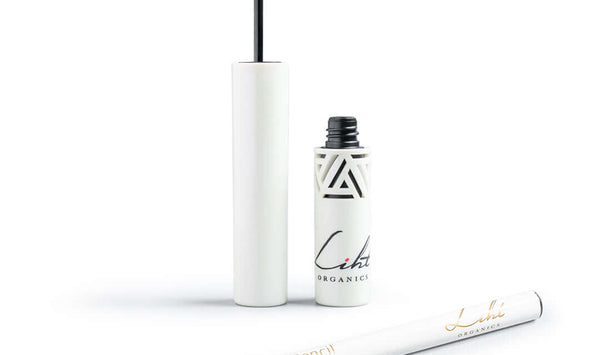
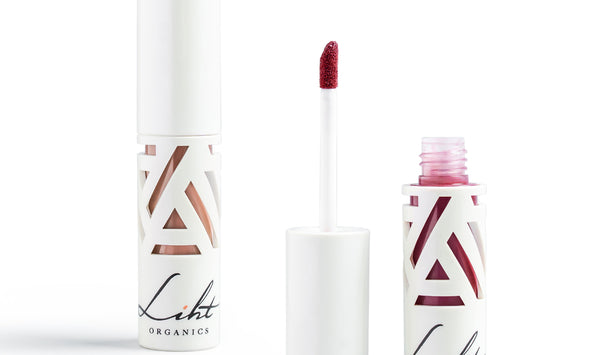
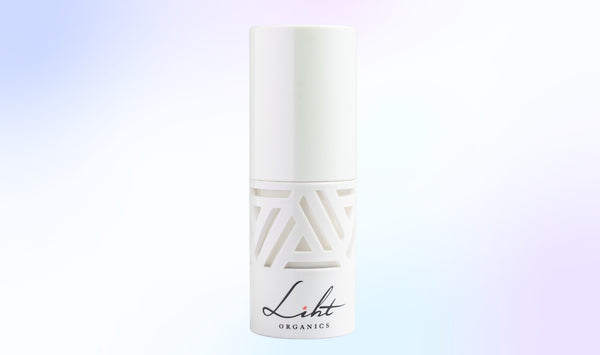

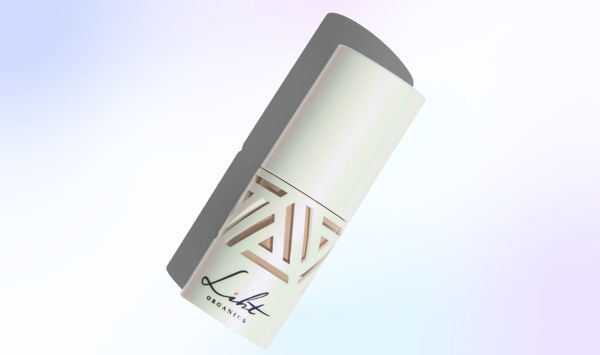
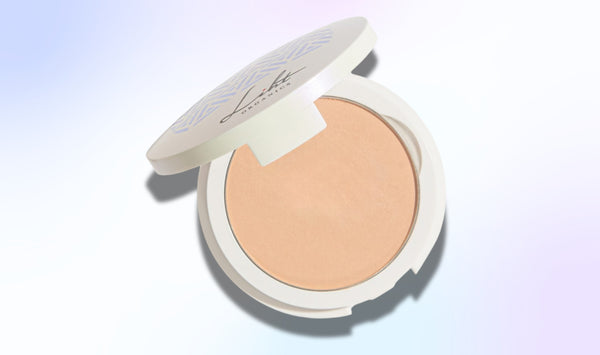
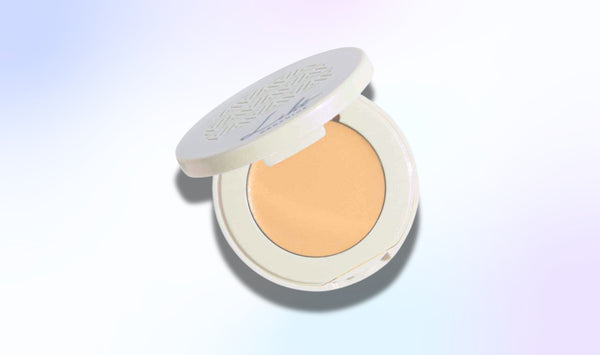
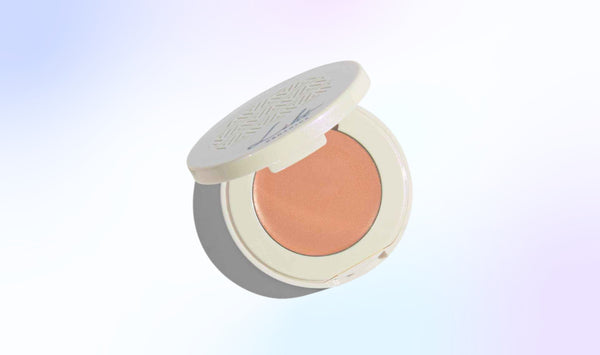
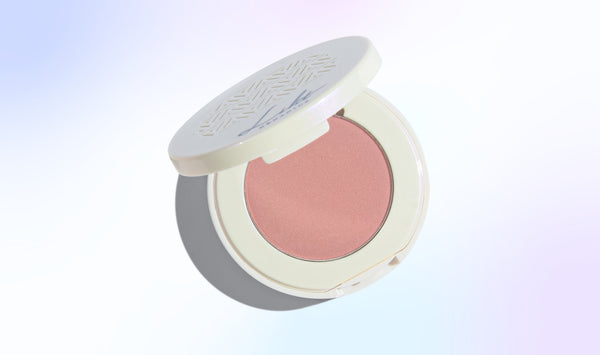
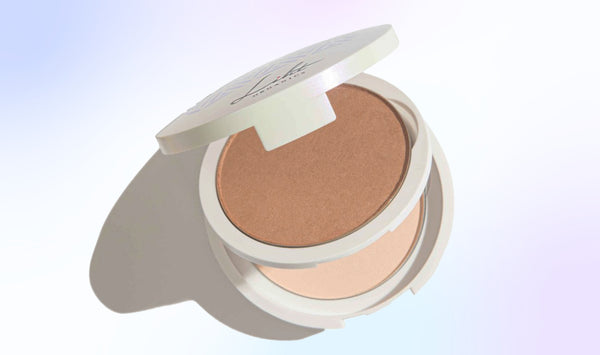
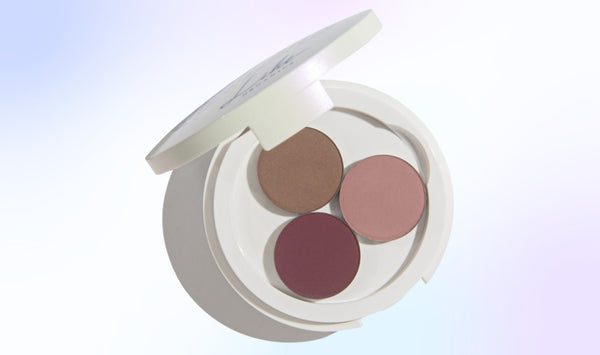
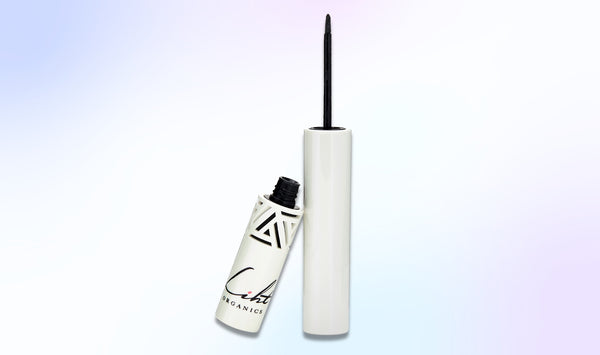
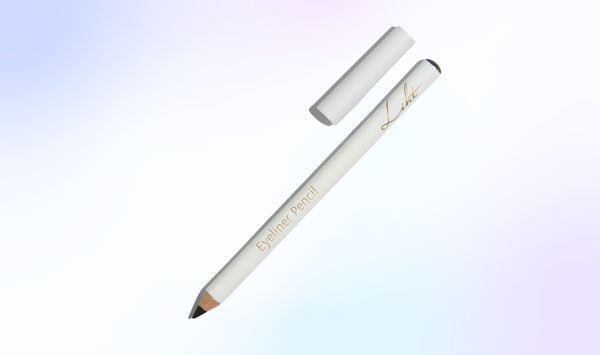
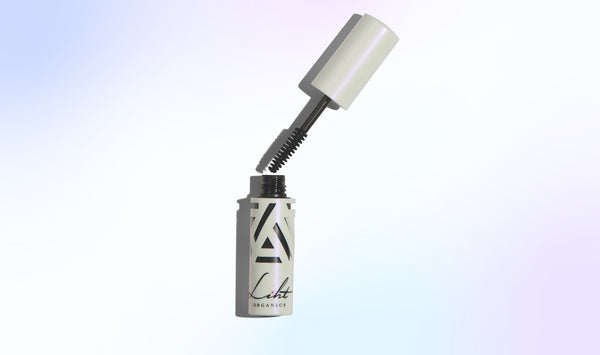
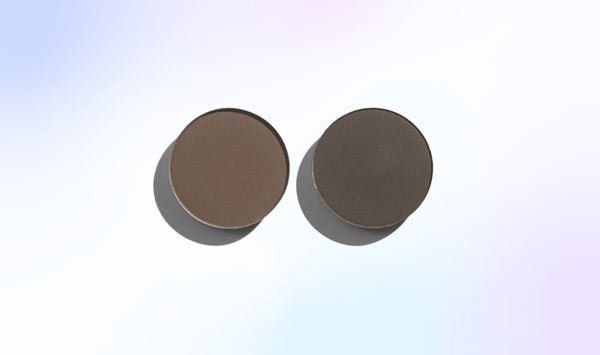
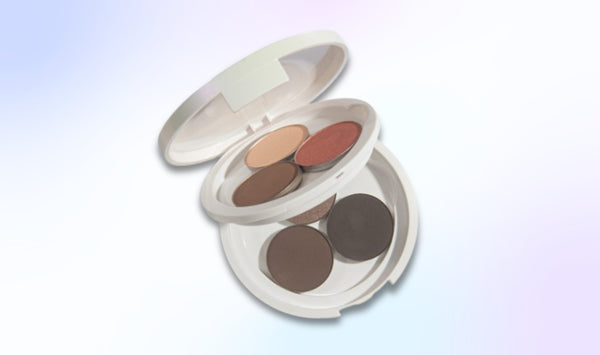
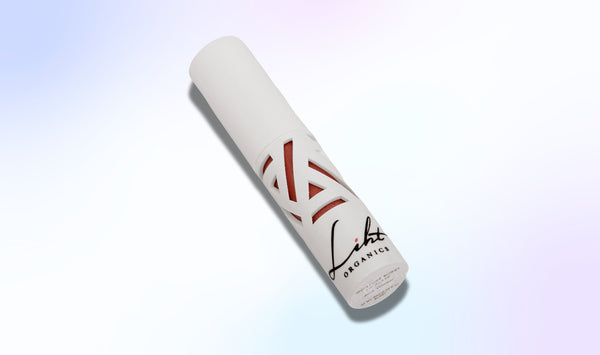
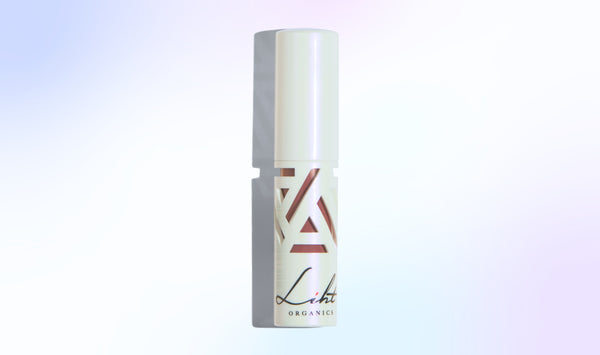
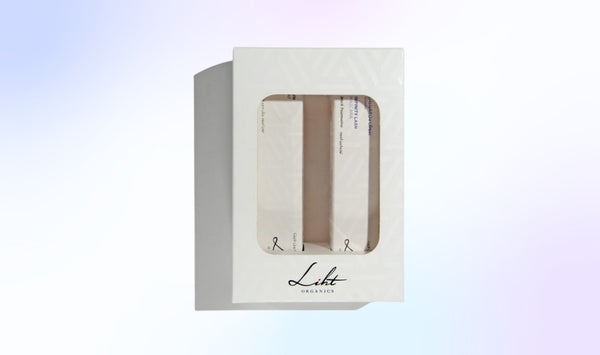
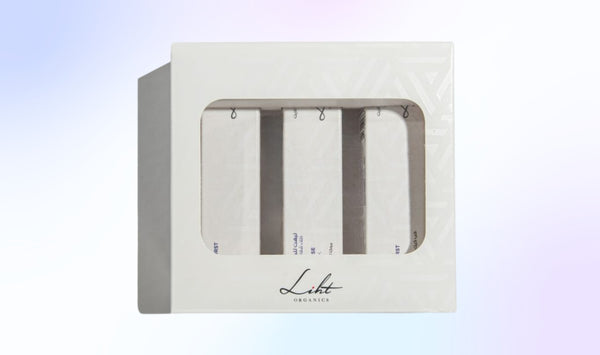


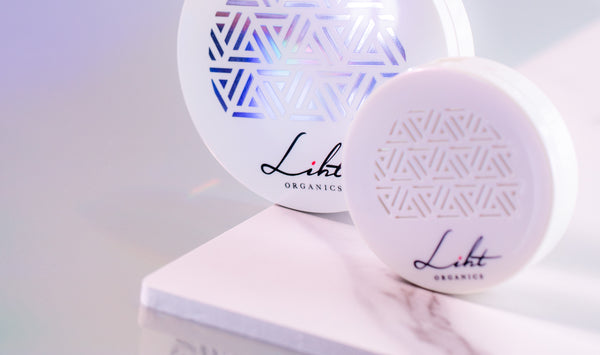
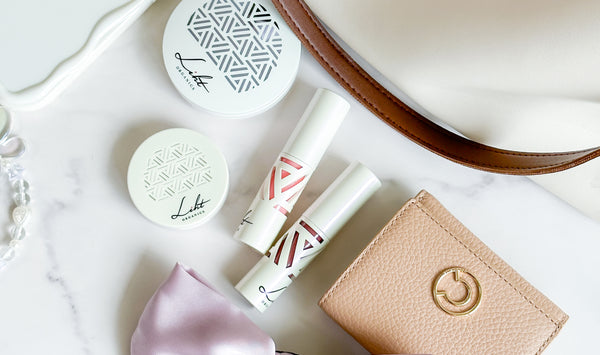
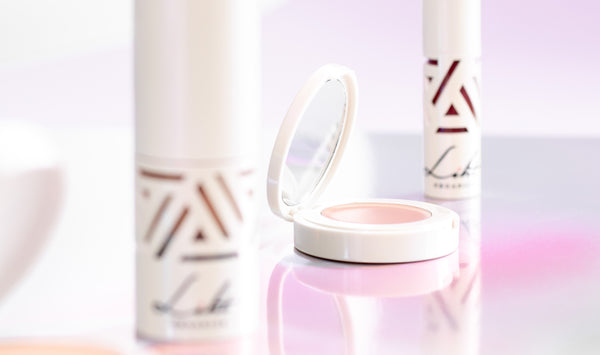




![[FEATURE] Liht Organics to debut at TFWA Asia Pacific show](http://lihtorganics.com/cdn/shop/articles/1_1.png?v=1759328400&width=170)
![[FEATURE] The Singapore-based organic makeup brand is a first-time exhibitor at this year’s TFWA Asia Pacific Exhibition in Singapore in May 2025](http://lihtorganics.com/cdn/shop/articles/2_1.png?v=1759328386&width=170)
![[FEATURE] Travel Retail Awards 2025 finalists - Best Make-up Product Color-Intense Liquid Lipstick – Liht Organics](http://lihtorganics.com/cdn/shop/articles/4_e2f54f0f-fcd1-46e7-9990-fc9d29e35131.png?v=1759328382&width=170)
![[FEATURE] Liht Organics targets expansion in travel retail](http://lihtorganics.com/cdn/shop/articles/3_1.png?v=1759328346&width=170)
































































